Death, destruction, displacement, starvation: 100 days of Israeli war on Gaza
By Press TV Website Staff
It’s been 100 days since the Israeli regime launched its fresh war on the besieged Gaza Strip.
From murdering children to bombing hospitals and schools to spawning the worst humanitarian crisis to rendering people homeless, the Israeli regime has done everything since October 7 to crush the resolve of Gazans, but to no avail.
We review the 100 days of the Israeli genocidal war on Gaza and the horrors it has brought upon Palestinians in the besieged coastal territory.
100 days of massacring children:
Amid the Israeli genocidal war on the besieged Gaza Strip, children have paid the highest price. According to rights groups, more than 10,000 children have been killed in Gaza since October 7.
Citing the Ministry of Health in Gaza, Save the Children in a statement on Thursday said over 10,000 children have been killed by Israeli airstrikes and ground operations in Gaza in nearly 100 days.
“The latest data from the Ministry of Health in Gaza shows more than 10,000 of Gaza’s 1.1 million children - or 1% of the total child population (since October 7),” the NGO stated.
More than 40 percent of those killed in the besieged territory, it said, are children.
“For every day without a definitive ceasefire, 100 children on average have been killed. There can never be any justification for killing children. The situation in Gaza is monstrous and a blight on our common humanity,” Jason Lee, Save the Children’s Country Director for Palestine, was quoted as saying.
Last month, Catherine Russell, executive director of the United Nations Children’s Fund, described Gaza as “the most dangerous place in the world to be a child” amid the massacres of children in the strip.
According to Euro-Med Monitor, Israeli aggression has left 18,000 Palestinian children injured, with many in critical condition, suffering amputations, severe burns and other complications.
The rights group also noted that around 24,000 to 25,000 children in Gaza have lost one or both parents, and roughly 640,000 children have their houses destroyed, rendering them homeless.
Hundreds of children are still trapped under the rubble of residential buildings targeted during Israel’s strikes on Gaza, which implies the actual death toll could be much higher.
The United Nations Children’s Fund in a report in late October stated that almost every child in Gaza has been exposed to “deeply distressing events and trauma.” The situation has only become worse now.
100 days of bombing hospitals
Since October 7, when the Israeli regime launched its fresh aggression against Gaza, the majority of hospitals have been either fully or partially destroyed with doors shutting for patients.
Last month, the World Health Organization (WHO) said only 8 out of 36 hospitals across the Gaza Strip are functional and able to admit new patients. That number has come down further now.
The Israeli regime has been bombing hospitals and killing Palestinians who have been forced to take shelter in hospitals after being driven out of their homes – in both northern and southern Gaza.
The regime’s military has destroyed many hospitals on the pretext that they serve as “command-and-control centers” for the Gaza-based Hamas resistance movement, without providing any evidence.
It all started on October 17 when the Israeli regime bombed Al-Ahli Arab Hospital in Gaza City. The deadly blast, which came amid indiscriminate bombings, killed over 700 people, most of them displaced.
A week before, the Israeli military had ordered the evacuation of 22 hospitals in northern Gaza, including this Anglican-run hospital, where hundreds of patients were receiving treatment.
On October 30, the Turkish-Palestinian Friendship Hospital, Gaza’s leading cancer treatment facility, announced in a statement that it suffered extensive damage due to Israel’s relentless bombings.
It was followed by Al-Quds Hospital, the second-largest health facility in Gaza City, and its surrounding area coming under intense shelling, which resulted in killings and injuries.
The Indonesian Hospital, north of Gaza, also came under attack, resulting in widespread damages.
Like other hospitals, the Indonesian Hospital also refused calls to evacuate and denied accusations that Hamas fighters are using the medical facility to launch rocket attacks at Tel Aviv.
Israeli fighter jets also struck Gaza City’s al-Wafa Hospital power generator and solar panels, which were used by various sections of the health facility.
The Nasser Medical Complex, which includes the Al-Nasser Children’s Hospital, the Rantisi Specialized Hospital, the Eye Hospital and the Psychiatric Hospital, was also hit by Israeli missiles.
Israeli forces also targeted the al-Shifa Hospital complex, the besieged territory’s largest hospital, which has for three months been struggling with a shortage of fuel, water and medicines.
100 days of hunger and starvation
UN Secretary-General Antonio Guterres, in a report to the UN Security Council last week, warned that “widespread famine looms” in the besieged Gaza Strip amid the Israeli regime’s bombings and siege.
UN relief chief Martin Griffiths had earlier warned that famine is “around the corner” as Gazans continue to grapple with the “highest levels of food insecurity ever recorded.”
“Gaza has simply become uninhabitable. Its people are witnessing daily threats to their very existence – while the world watches on,” Griffiths was quoted as saying by the UN Office for the Coordination of Humanitarian Affairs (OCHA). “Hope has never been more elusive.”
The UN Agency for Palestinian Refugees also warned about insufficient aid to Gaza, which it said has left 40 percent of the territory’s population “at risk of famine.”
“Every day is a struggle for survival, finding food and finding water,” Thomas White, director of UNRWA affairs in Gaza was quoted as saying on X, formerly known as Twitter.
The Rome Statute of the International Criminal Court that governs armed conflicts states that “intentionally using starvation of civilians as a method of warfare by depriving them of objects indispensable to their survival, including willfully impeding relief supplies” is a violation.
However, what is unfolding in the Gaza Strip, according to observers, is not hunger or famine, but deliberate starvation – using starvation as a weapon of war against the people of Palestine.
Tlaleng Mofokeng, the UN Special Rapporteur on the Right to Health, responding to the UN chief’s latest report, said the blockaded Palestinian territory is dealing with “deliberate starvation, not famine.”
“We need an immediate ceasefire,” he wrote in a post on X, in response to the report that said “widespread famine looms” in Gaza.
Oxfam International has also warned that starvation “is being used as a weapon of war against civilians in Gaza in the act of collective punishment.”
100 days of displacement
Amid the genocidal war of the Tel Aviv regime on Gaza, millions of Palestinians have been rendered homeless and internally displaced, most of them putting up in makeshift tents in southern Gaza.
The UN Relief and Works Agency for Palestine Refugees in the Near East (UNRWA) in a report last week said 1.9 million people, more than 80 percent of the population, have been displaced since October 7.
“No place is safe, not there and not anywhere in Gaza. A brutal war continues, unabated,” the UN agency said in the report posted on X.
The UN humanitarian chief Martin Griffiths earlier this week said the world body is “deeply alarmed” by statements from Israeli officials about the deportation of the Palestinian population from the Gaza Strip.
Egypt's Foreign Minister Sameh Shoukry, in his remarks last week, also asserted that all steps taken by the Israeli regime are aimed at forcibly displacing Palestinians from Gaza.
UNRWA commissioner-general Philippe Lazzarini in a statement published on Saturday, marking the 100 days of the war, said the war has affected more than 2 million people.
“Many will carry lifelong scars, both physical and psychological. The vast majority, including children, are deeply traumatized,” he was quoted as saying.
Israeli regime ministers have been openly calling for the ouster of Palestinians from Gaza in order to change the territory’s demography and allow Zionist settlers to gain a foothold there.
"What needs to be done in Gaza is to encourage emigration," Israeli finance minister Bezalel Smotrich said in a recent interview. "If there are 100,000 or 200,000 Arabs in Gaza and not 2 million Arabs, the whole discussion for the day after will look completely different.”
100 days of murdering journalists
The death toll of journalists in the Gaza Strip since October 7 has already surged past 100, now reaching the mark of 117, making the territory the most dangerous place for journalists today.
The Committee to Protect Journalists (CPJ), the media advocacy group, says the violence against journalists in Gaza amid the current Israeli aggression is ‘unparalleled’ in the group’s history.
Different organizations for the protection of journalists have repeatedly protested against Israel’s deliberate targeting of journalists, describing it as a war crime under international humanitarian law.
“Journalists across the region are making great sacrifices to cover this heart-breaking conflict. Those in Gaza, in particular, have paid, and continue to pay, an unprecedented toll and face exponential threats,” the CPJ said in a recent report.
“Many have lost colleagues, families, and media facilities, and have fled seeking safety when there is no safe haven or exit.”
The toll of journalists killed in Gaza since October 7 has even surpassed World War II – 69 media personnel were killed in World War II which lasted from 1939 to 1945.
Last week, the United Nations sounded an alarm about the rising number of journalists killed in the Gaza Strip amid the Israeli regime's genocidal war.
The world body said the killings of all journalists in Gaza “must be thoroughly, independently investigated to ensure strict compliance with international law, and violations prosecuted."
100 days of destroying cultural heritage
Since October 7, the settler-colonial Zionist entity, in order to colonize Palestinians and change the demographic character of the place, has been destroying important cultural heritage sites in Gaza.
The roads lined with bougainvillea, the markets bustling with people, the mosques reverberating with calls to prayer, the Sunday mass at one of the oldest churches in the world, the beach that would be a picnic spot for families, the cemeteries – everything has come under attack.
A recent report by the Gaza media office revealed that around 200 monuments belonging to Christian and Islamic history and architecture in the besieged strip have been either completely or partially destroyed as a result of indiscriminate Israeli strikes.
Israeli troops have "either destroyed or damaged more than 200 out of 325 cultural and historical heritage sites in the Gaza Strip," the report said.
A report released on November 7 by Spain-based NGO “Heritage for Peace” also said the latest Israeli Gaza has impacted at least 104 archaeological sites in Gaza.
One of them is the Great Omari mosque, the oldest and largest mosque in Gaza, which was completely destroyed in an Israeli airstrike in December. Located in the center of the old Gaza City, it was famous as the first mosque in the Gaza Strip.
St Porphyrius church, dating back to the 5th century, was also hit by an Israeli airstrike, destroying the building and killing a number of people who had sought protection there.
VIDEO | Trump fighting allies on Greenland
Iran FM: Selective respect for deals now haunting Europe
Arab rights group urges UK to sanction Netanyahu over 'incitement to genocide' in Gaza
‘Political, non-constructive’: Iran slams UNHRC special session on recent riots
Forced evacuations in South Gaza as Israeli military expands control over land
Iran reports steep rise in exports after forex policy shift
Iranian bank loans up 47.2% y/y in Apr-Dec
Macron slams Trump’s ‘bullying’ as US threatens tariffs, pushes Greenland grab


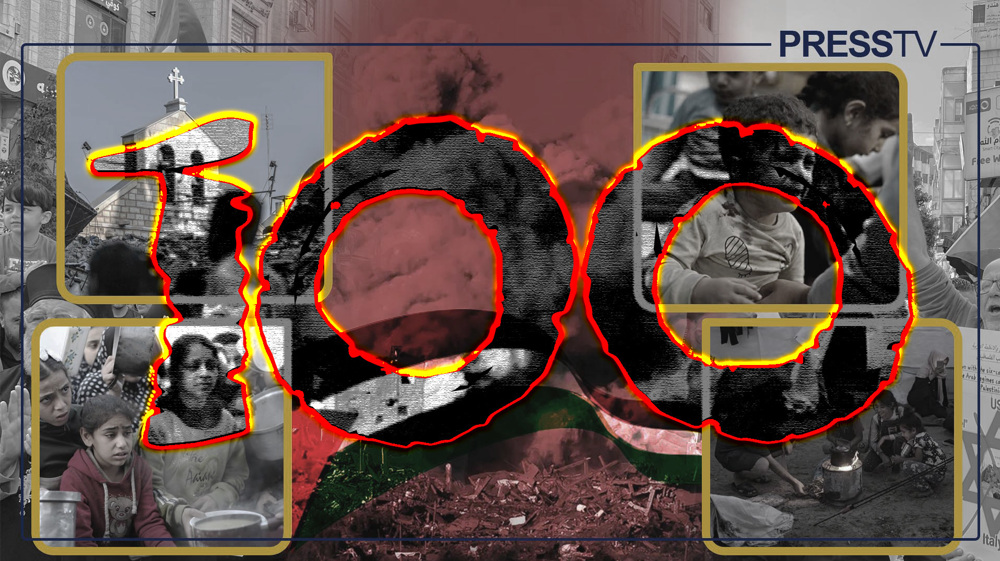
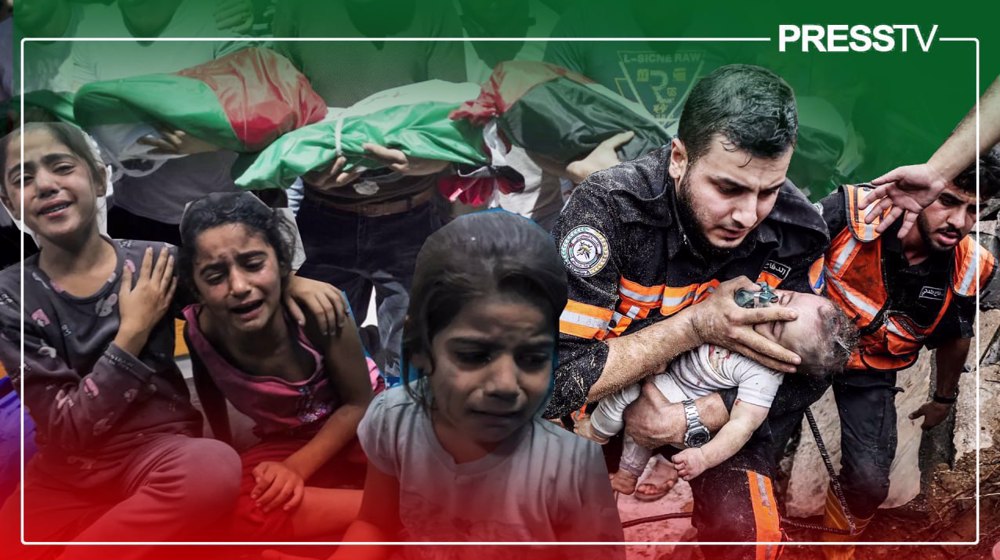
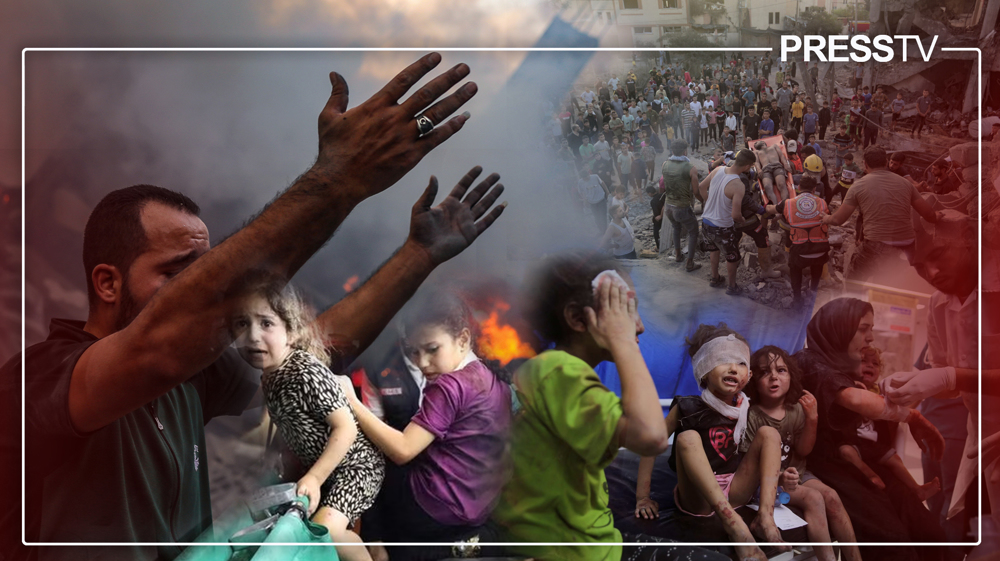

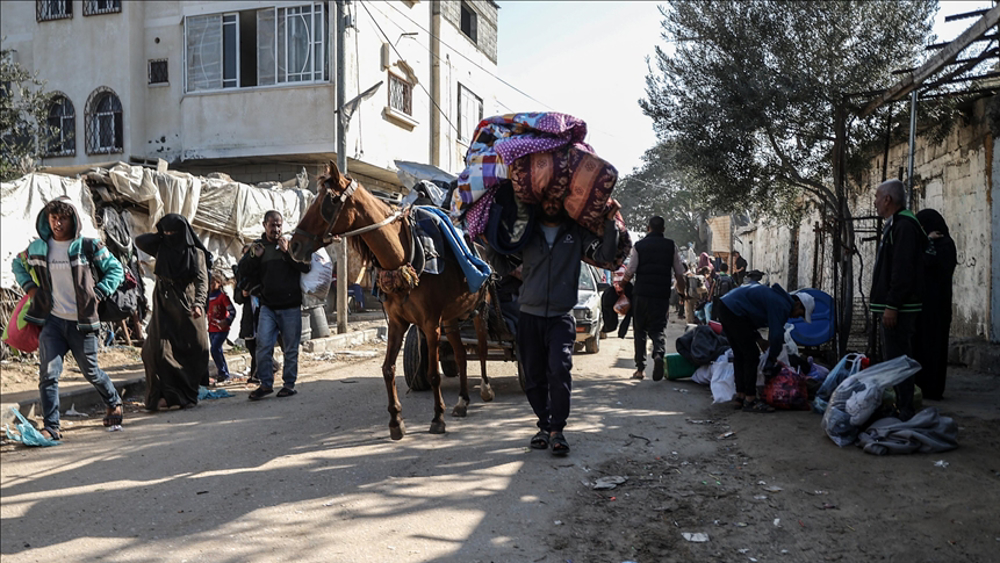
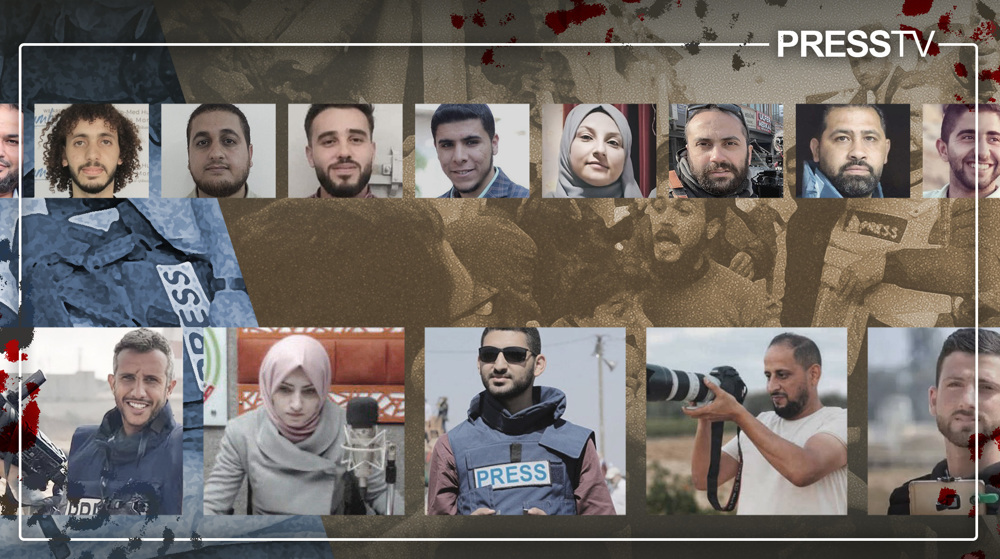
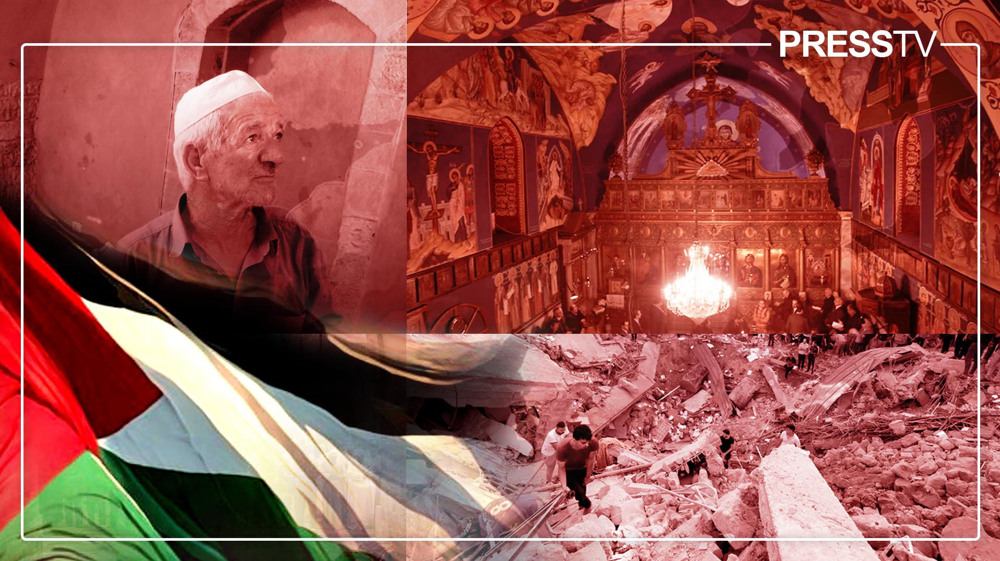

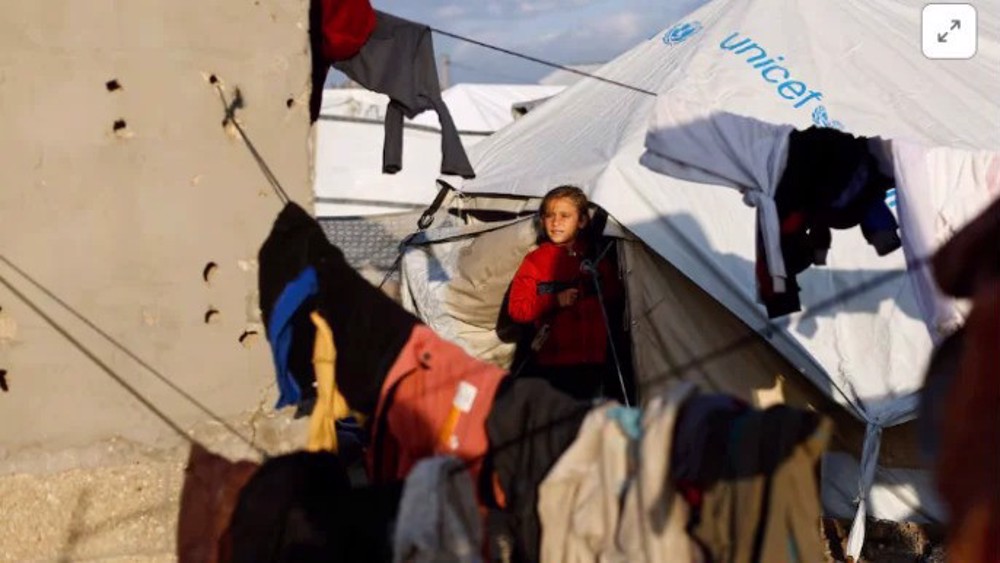




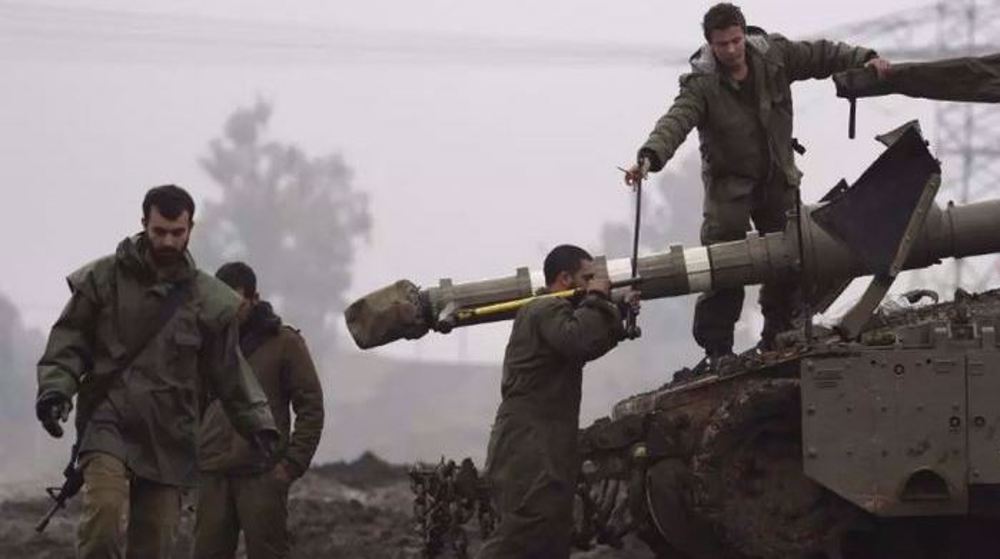


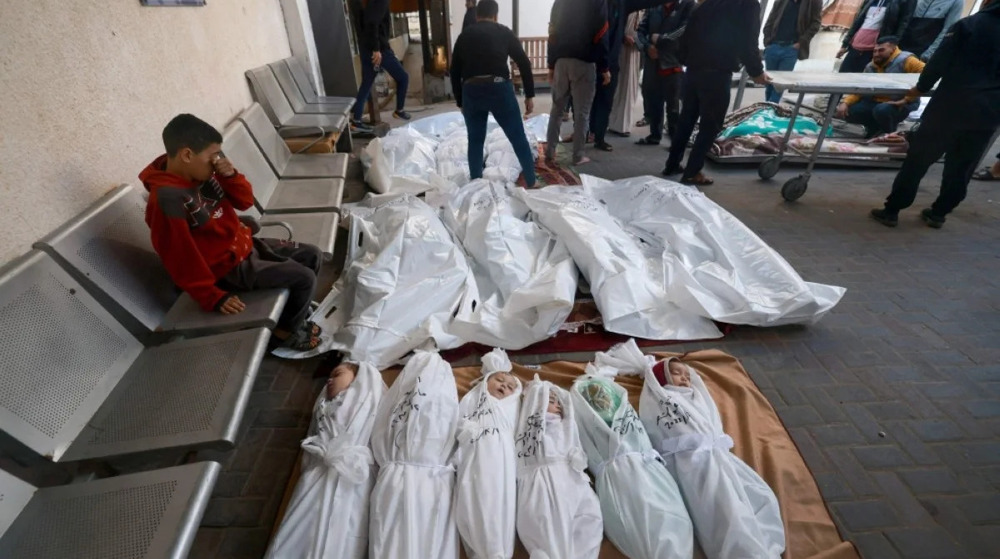
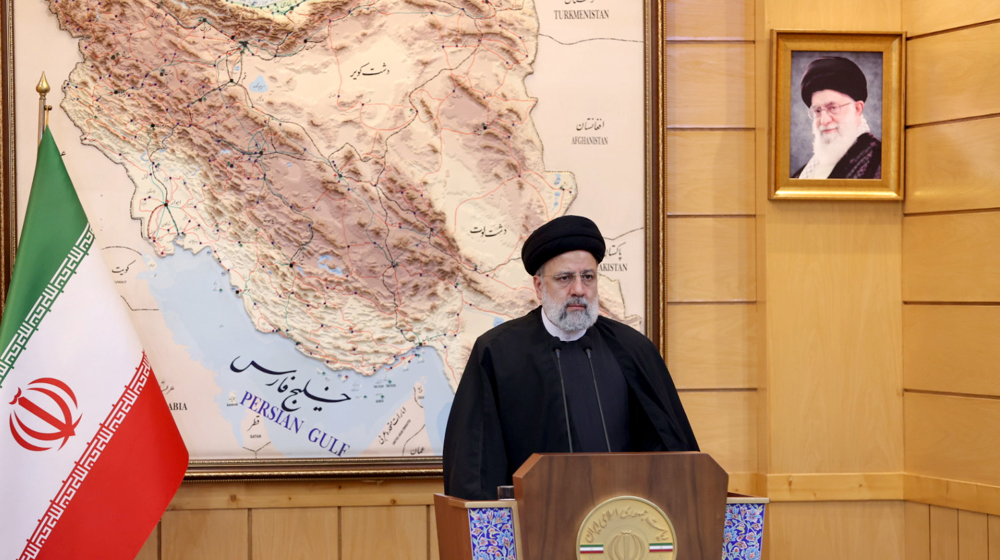

 This makes it easy to access the Press TV website
This makes it easy to access the Press TV website